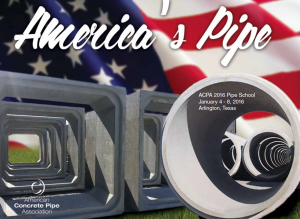In November 2018, flames from the Camp Fire, named for its place of origin on Camp Creek Road, raged for 17 days, taking 85 lives and destroying property, memories, wildlife and infrastructure in its path. Burning 240 square miles, the Camp Fire was the deadliest fire in the United States in 100 years. It was also one of the most expensive. The global reinsurance firm Munich RE revealed that the fire losses topped $12.5 billion, making it the world’s costliest disaster of 2018.
Fires such as the Camp Fire are a somber reminder of the need for resilient infrastructure, especially when it comes to keeping roadways undamaged during evacuations. Fire poses a real threat across the United States – not just in California. Nearly half of the country’s population resides in the top 10 states affected by wildfire. In addition to wildfire, acts of terror and human recklessness need to be considered.
As society faces threats from both natural and manmade disasters, it’s vitally important for engineers everywhere to carefully plan fire-resilient infrastructure to help ensure the safety and future existence of their communities. Unfortunately, specifiers often receive conflicting information about the true resiliency of many products.
Despite the clear need for infrastructure design that can withstand natural disasters, there has been a disturbing trend toward non-resilient pipeline construction. Some agencies allow the specification of plastic products in pipeline construction. In fire zones, pipes made from plastic pose a serious threat to infrastructure, environment and the welfare of communities if there is a fire-related event.
Plastic pipes burn. Concrete pipes don’t. Regrettably, the plastic pipe industry is downplaying the risk of utilizing plastic products in infrastructure design.
Here’s the reality of plastic pipe.
When plastic pipe burns under roadways, the burning pipe melts, often collapsing, causing the roadway above to become unusable, affecting traffic flow, daily business and evacuation routes for the local community. The plastic drainage culvert must be replaced and the roadway above it closed until it is repaired. Not only is the road closure an inconvenience to the public, if that road is an evacuation route, it could potentially lead to people being stranded as they are trying to escape a catastrophic event. Burning plastic pipe not only affects the community, but it affects the environment, increasing the risk of future flooding and potential property damage.
Another often-overlooked concern, is that burning plastic releases harmful toxins into the environment. When heated or ignited, plastic releases carcinogenic dioxins and harmful chemicals such as benzene. Not only are communities dealing with the heartbreak of rebuilding homes, cities and their lives, the residents have added worries about environmental risk factors from potentially harmful substances in their air and water.
In one example, after the 2017 Santa Rosa fire, “residents reported a foul smell in their water supply. An investigation determined that the underground PVC piping was damaged by the fire and began leaching. Plastic is permeable and prone to seepage and leaching. Scientists discovered that the pipes had emitted benzene, a carcinogen and petrochemical used in HDPE plastic pipes.”
What material is truly fire-resilient?
Concrete has a long history of proven reliability. Concrete pipe should be the material of choice for resilient pipeline construction that can withstand a fire event.
Concrete is inherently fire-resistant and has the highest fire-resistance classification. Does NASA specify plastic to withstand the pressure and heat of rocket launches? Of course not. Concrete is the material of choice for launch pads.
It’s vital in these times of fiscal responsibility, uncertain weather patterns and man-made catastrophes that we understand the startling difference between concrete and plastic pipes.
Do we want a product that may have a lower initial material cost but isn’t as cost-effective over the system’s life cycle when considering structural design, installation and maintenance – not to mention the safety of the community and the lives of its people?
The time has come for engineers, agencies and owners to vigilantly specify concrete products to help protect their infrastructure and communities in fire-related disasters. Minimizing the risk to the critical underground infrastructure minimizes the risk to critical evacuation routes and endangerment of communities. Protect your community and its infrastructure. Choose concrete pipe!


